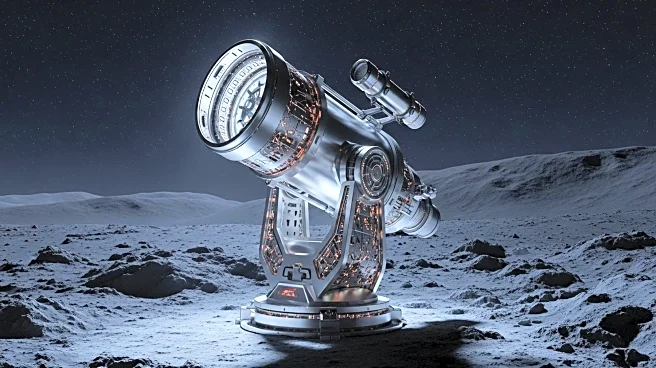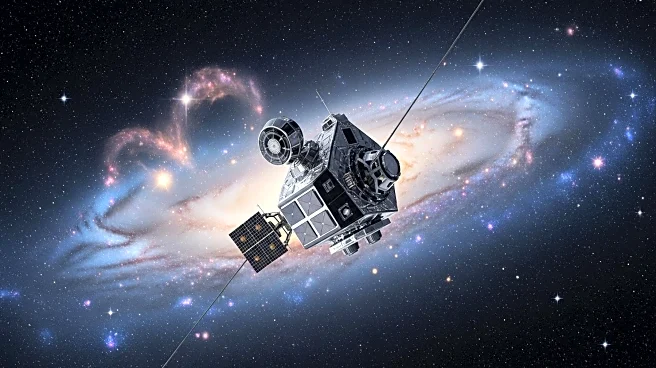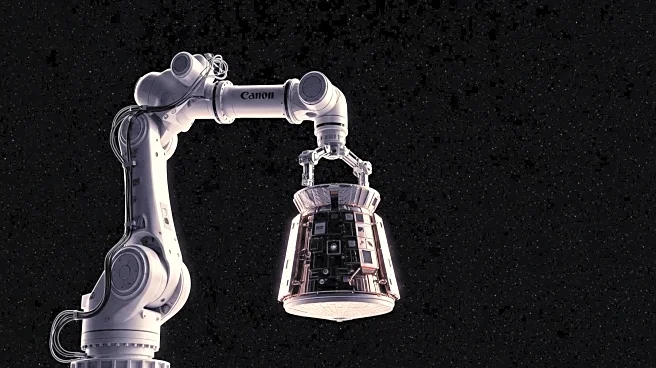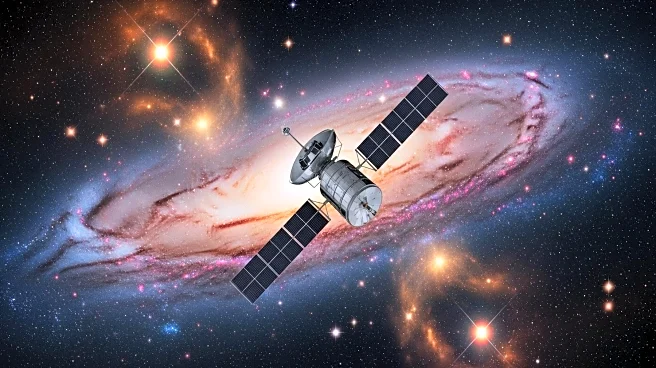What is the story about?
What's Happening?
Canadensys Aerospace, a Toronto-based company, has been chosen to design and build the instrument suite for a new telescope planned to be placed near the Moon's south pole. This project is in collaboration with Hawaii's International Lunar Observatory Association (ILOA) and is set to launch in 2027. The telescope aims to withstand the harsh lunar environment, including radiation and extreme temperatures, for at least a year. The Moon's south pole is a strategic location due to its distance from Earth's signal interference, allowing the telescope to capture images of celestial bodies like the center of the Milky Way without disruption from light pollution or passing satellites.
Why It's Important?
The development of a telescope at the Moon's south pole is significant for several reasons. It represents a step forward in lunar exploration and scientific research, providing a unique vantage point for astronomical observations free from Earth's interference. This initiative aligns with NASA's Artemis missions, which also target the south pole for its potential water ice resources. The collaboration between Canadensys Aerospace and ILOA highlights international efforts to advance space technology and exploration. The success of this project could pave the way for future lunar missions and contribute to the establishment of a sustainable lunar ecosystem.
What's Next?
Canadensys Aerospace plans to continue its involvement in lunar exploration with additional projects, including the design and construction of a rover to search for water ice and study lunar geology, set to launch around 2029. The company is also competing for a contract to build a 'lunar utility rover' for the Canadian Space Agency, which is expected to launch in 2033 to assist astronauts on the Moon's surface. The final selection for this project will be made in late 2026 or early 2027, with other companies like MDA Space and Mission Control also in the running.
Beyond the Headlines
The placement of a telescope on the Moon's south pole could have long-term implications for space exploration and international cooperation. It may lead to advancements in lunar infrastructure and resource utilization, fostering a new era of scientific discovery. The project also underscores the growing interest in the Moon as a strategic location for research and exploration, potentially influencing future space policies and collaborations.
AI Generated Content
Do you find this article useful?













